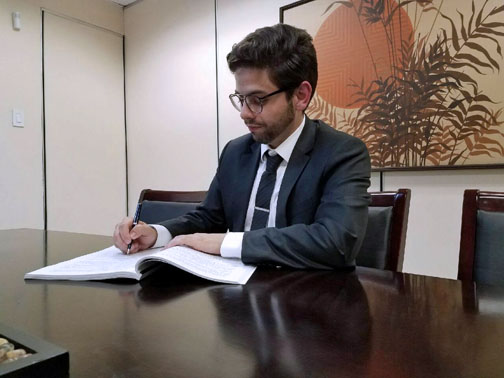Treasury announces ‘Taxpayer Rehabilitation Program’

The Puerto Rico Treasury Department unveiled Monday a new initiative called the “Taxpayer Rehabilitation Program,” to encourage citizens to meet their tax responsibilities by granting payment plans.
Treasury Secretary Raúl Maldonado-Gautier, said the program considers Puerto Rico’s current economic situation and “is intended to serve as an incentive to taxpayers to keep their accounts up to date and commit to prospectively comply with their tax responsibilities.”
The Puerto Rico Internal Revenue Code of 2011, as amended, provides a mechanism to taxpayers who can not pay their taxes — in whole or in time — to qualify for a payment plan.
The agency will grant payment plans for five types of tax debts: Income tax; Special state temporary tax over intangibles; Sales and Use Tax (IVU, as it is known in Spanish); Tax withheld at source by employers and withholding agents; and Excise taxes.
“The type of payment plan granted depends on the category of the tax debt that the taxpayer has and the accumulated total principal of such debt,” said Francisco Parés, deputy secretary of Internal Revenue at Treasury.
The types of payment plans and requirements for approval are as follows:
Automatic Payment Plans
Automatic Payment Plans do not require the assessment of the taxpayer’s economic capacity for approval. A request for an Automatic Payment Plan will be granted in cases where the following conditions are met:
- The taxpayer files their application as set out in Part II-C-1 of the Internal Revenue Circular Letter No. 17-05;
- The taxpayer submits the required documentation for the payment plan requested, and;
- The taxpayer meets the requirements of the category for which they seek a payment plan.
“Within the tax debts that qualify for Automatic Payment Plan, are debts under Category I, III and IV whose principal balance owed is not more than $50,000 and debts within Category II,” Parés said, adding taxpayers seeking an Automatic Payment Plan must submit an application to the agency.
Regular Payment Plans
Taxpayers who have a tax debt within Categories I, III and IV with a principal balance due of more than $50,000, or within Category V, may qualify to benefit from a Regular Payment Plan, Treasury officials explained.
Regular Payment Plans will be awarded only those taxpayers who demonstrate they do not have the financial capacity to pay the entire balance due.
“The request must be made in the corresponding collections district,” Parés said. “Collections district officers will evaluate the application and will authorize the approval of the regular payment plan agreement in cases that so warrant.
“In addition, payment plans will granted under the terms and conditions established by Treasury,” he added.
Meanwhile, to be eligible for a payment plan, the taxpayer will have to include all of the assessed and unpaid debts they have with Treasury. This means that the taxpayer can not select specific debts to be included in the payment plan they are pursuing.
By requesting the payment plan, the taxpayer must satisfy the total debts assessed by Treasury that are outstanding and have not been challenged or are under review or appeal, either at the agency level or in court.
In addition, subject to certain conditions, Treasury may waive, in whole or in part, any penalty applicable to the tax debt that is included in a payment plan. Penalties that may be subject to cancellation will be those that have been assessed and are outstanding on the date of signing the agreement, he said.
Taxpayers can already file their requests for payment plans through [email protected] or at the agency.








The best way to insure life long dependency on the tradition of the Conquistadores is to provide ‘protection that is really a nice way to insure control of the people, then force all sorts
of taxes to insure money for the rulers who do not work.
Until PR learns that to stimulate economic development, you need to slim down dependency that requires 40% of workers to be employed by the State’s political leaders. What politician seeking survival wants to change this?
Solution: Wat until the people leave and the owner- a.k.a. the U.S. Congress- comes and demands changes that only make things worse! Ultimately, the time will come when a Donald Trump type in PR will manage to get a non-political solution be put in place. A guy like Ronald Reagan can do it too!